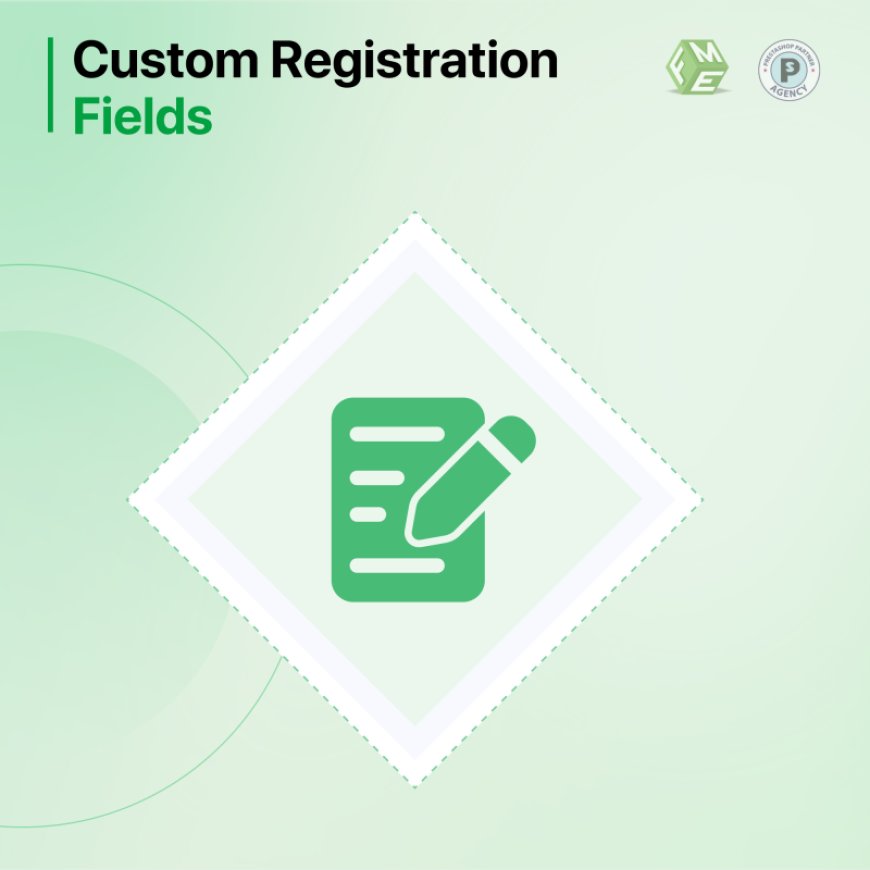How to Use Custom Registration Fields for Targeted Marketing and Customer Segmentation
Unlock the power of PrestaShop registration fields for personalized marketing and effective customer segmentation to increase conversion and loyalty.

In today’s competitive eCommerce landscape, understanding your customers is the key to success. One powerful tool for gaining insights into customer preferences and behaviors is through custom registration fields. By capturing more specific data at the time of user registration, businesses can enhance their marketing efforts, boost customer engagement, and achieve better segmentation. This article will guide you through how to leverage custom registration fields for targeted marketing and customer segmentation, focusing on the popular eCommerce platform PrestaShop.
What are Custom Registration Fields?
Custom registration fields refer to the extra fields that you add to the standard registration form on your website or eCommerce store. Unlike the basic fields such as name, email address, and password, custom fields allow you to collect additional information based on your business needs. This could include asking for preferences such as product categories of interest, birthday details, location, or any other relevant data that helps you tailor your marketing strategy.
For instance, with PrestaShop registration fields, you can go beyond generic information by incorporating custom fields like a customer’s favorite product type or preferred shopping time. This extra data enables businesses to deliver more personalized experiences.
Why Use Custom Registration Fields?
The benefits of adding custom fields to your registration form are numerous. Let’s look at the direct impact on targeted marketing and customer segmentation:
-
Improved Customer Segmentation
Collecting relevant data through PrestaShop registration fields can help you create highly targeted customer segments. For example, if you ask customers about their favorite product category during registration, you can use this data to segment your audience based on preferences. This way, when you launch new products in a specific category, you can send personalized marketing campaigns to the customers most likely to be interested. This segmentation leads to more relevant messaging, which improves conversion rates and customer satisfaction. -
Enhanced Personalization
Personalized marketing is one of the most effective ways to increase engagement. By incorporating PrestaShop registration fields that ask for detailed customer preferences, you can create a more tailored experience for each shopper. For example, if a customer indicates an interest in eco-friendly products, you can send them offers on sustainability-focused items. The result is not only an enhanced customer experience but also a higher likelihood of conversion because the marketing feels relevant. -
Better Marketing ROI
Targeted marketing based on the data gathered through custom registration fields results in better ROI for your campaigns. According to research, segmented email campaigns have 14% higher open rates and 10% higher click-through rates compared to non-segmented campaigns. By asking for specific details during the registration process, you can ensure that your marketing efforts are directed towards the right people with the right offers, reducing wasted spend and boosting overall campaign effectiveness. -
Builds Customer Trust and Loyalty
Customers are more likely to trust businesses that show they care about their needs and preferences. By offering a personalized experience based on the information gathered during registration, you show that you value the individual customer. When customers feel understood, they are more likely to become repeat buyers and brand advocates.
How to Use Custom Registration Fields for Effective Customer Segmentation
Now that we understand the importance of PrestaShop registration fields, let’s dive into how to use them effectively for customer segmentation:
-
Start by Asking the Right Questions
While it’s tempting to collect a lot of information, focus on asking questions that will genuinely help with segmentation. Some examples include:- What type of products are you interested in? (Fashion, tech, beauty, etc.)
- What is your preferred shopping frequency? (Weekly, monthly, occasionally)
- What is your location?
- What is your preferred shopping method? (Online only, in-store, or a mix of both) These questions help create segments based on buying behavior, location, and interests, allowing you to send targeted offers and recommendations.
-
Leverage Data for Dynamic Content
Once you’ve gathered enough data from your PrestaShop registration fields, use this information to personalize your website content. For example, if a customer selects “sportswear” as their interest, you can dynamically display sportswear-related products when they log in. This not only increases the chances of them making a purchase but also reinforces the idea that your store caters to their needs. -
Automate Marketing Campaigns Based on Segments
Use your customer data to create automated email or SMS campaigns. For example, if a customer registers with a preference for eco-friendly products, you can set up an automated email to send them updates about new sustainable product launches. By segmenting your customers based on their registration data, you can ensure that each message they receive is relevant to their specific interests. -
Test and Optimize Your Registration Form
Not all customers will feel comfortable sharing too much information upfront. It’s important to strike the right balance between useful data collection and respecting user privacy. A good practice is to test different fields and see which ones give you the best results in terms of conversion and engagement. Additionally, you can offer incentives such as discounts or exclusive offers for customers who provide more detailed information, encouraging more people to complete your registration form. -
Regularly Update and Cleanse Your Data
Over time, customer preferences may change. This means it’s crucial to continuously update your registration fields to capture the most accurate and relevant data. Regularly cleanse your database to remove outdated or inaccurate information, ensuring that your segmentation efforts are always based on current customer behaviors.
The Impact of Targeted Marketing on Customer Retention
Incorporating customer data into your marketing efforts doesn’t just help with acquisition; it also plays a crucial role in retaining customers. According to a study by Bain & Company, a 5% increase in customer retention can increase profits by 25-95%. By delivering targeted, personalized marketing messages, you can keep customers coming back, reducing churn and boosting long-term revenue.
Conclusion
Custom registration fields, particularly in platforms like PrestaShop, are an invaluable tool for eCommerce businesses looking to optimize their marketing strategies and improve customer segmentation. By asking the right questions, personalizing the customer experience, and automating targeted campaigns, businesses can increase conversion rates, build stronger customer relationships, and drive higher ROI. As the eCommerce industry continues to grow, leveraging customer data for segmentation will become increasingly crucial to staying ahead of the competition.
What's Your Reaction?



























